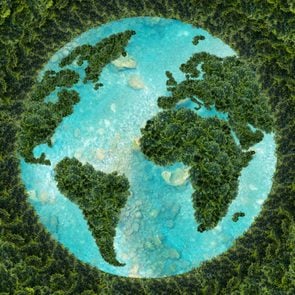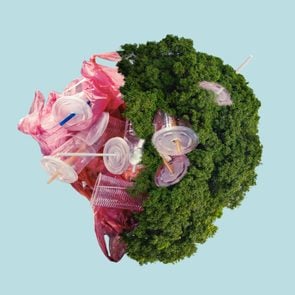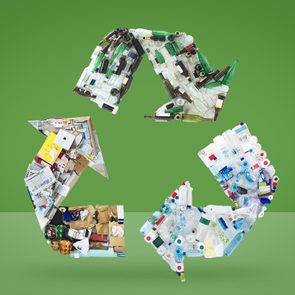See How Discarded Flip-Flops from Kenya’s Beaches Become Stunning Sculptures
Updated: Aug. 12, 2022
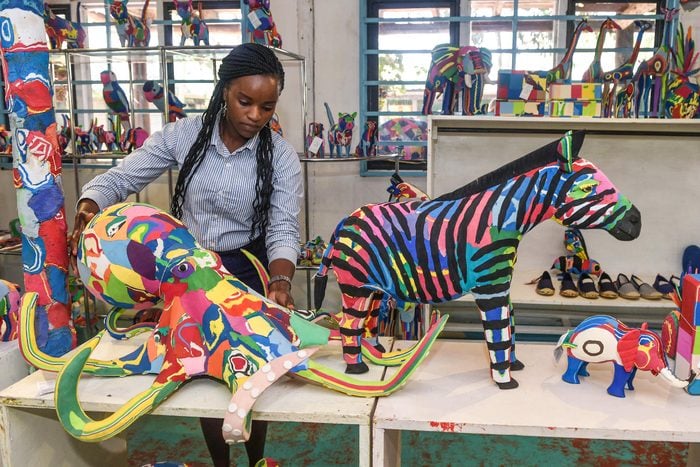
Flip-flops are the most popular type of shoe in the world, with more than 3 billion produced every year, and it’s easy to see why. They’re comfy, they’re easy to wear and they’re inexpensive. Unfortunately, most of them are also terrible for the environment.
The majority are made from synthetic, petroleum-based materials and have an average life span of just two years. They’re also a surprisingly big part of the 8 billion tons of plastic that aren’t recycled and pollute the oceans every year, harming marine life and exposing people to dangerous toxins. In Kenya, this is a huge problem, and around 90 tons of flip-flops wash up on its shores annually.
When Julie Church, a marine conservationist, realized the extent of this problem, she decided to tackle it in a unique way: by upcycling those washed-up flip-flops and turning them into amazing, colorful sculptures. While upcycling isn’t new and you’ve probably done it yourself by repurposing old clothes or household items, Church and her company, Ocean Sole, take it to an entirely new level. In the process, she’s helping both the environment and local Kenyans, as well as highlighting the importance of sustainable living.
The “sole” of an idea
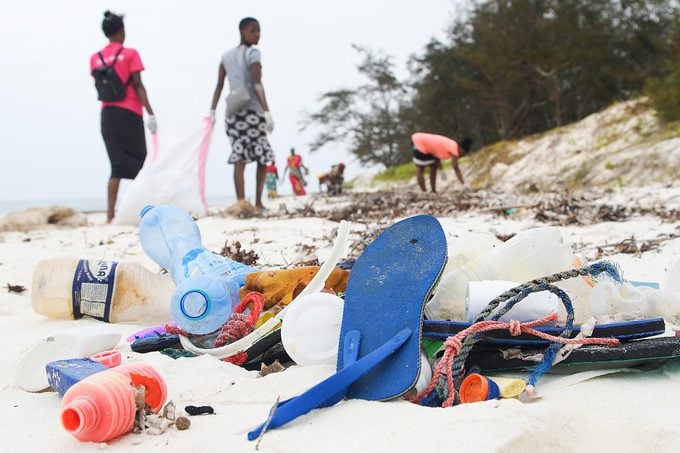
In the late 1990s, when Julie Church was working as a marine conservationist in Nairobi, she found an entire beach “just covered in flip-flops,” according to Erin Smith, the CEO of Ocean Sole. The pollution had killed fish and plant life, prevented turtles from coming on land to hatch and harmed both the ecosystem and the community at large, since people used to fish in the area.
Around that time, Church also noticed children making toys out of the thousands of flip-flops that had made their way to the country’s beaches. She began working with the kids’ mothers to encourage them to not just collect the shoes, but also to wash, cut and shape them into marbled blocks that could be sculpted and carved. The families could then sell this art at local markets, providing another means of income.
The idea took off, and in 1998, Church founded Ocean Sole as a nonprofit. Nearly a quarter century later, the group aims to upcycle a million flip-flops every year, crafting them into incredible sculptures that are now sold all over the world. Additionally, Ocean Sole directly impacts more than 1,000 Kenyans, many of whom work as flip-flop collectors or artists, and contributes 10% to 15% of overall revenue to vocational and educational programs for residents, as well as beach cleanup and conservation efforts.
From beach trash to colorful treasures
So, how does this work, exactly? Beachcombers working for Ocean Sole collect discarded flip-flops from Kenya’s shores and inner waterways. These are then cleaned, shaved, sanded down and glued together into bright, marbled blocks that sculptors can stack and piece together to form the base of their designs. The Ocean Sole artists—there are more than a dozen right now—make all kinds of shapes and designs, from small- to medium-size animals to life-size model cars.
The whole process is done by hand using basic tools like sandpaper, carpentry knives and occasionally some upcycled Styrofoam or wire for support, especially for the larger commissions. And speaking of commissions, yes, Ocean Sole does take requests. Their work has shown up at Rome’s Fashion Week, the Swedish Cultural Museum, the London Zoo and more.
What’s next for Ocean Sole?
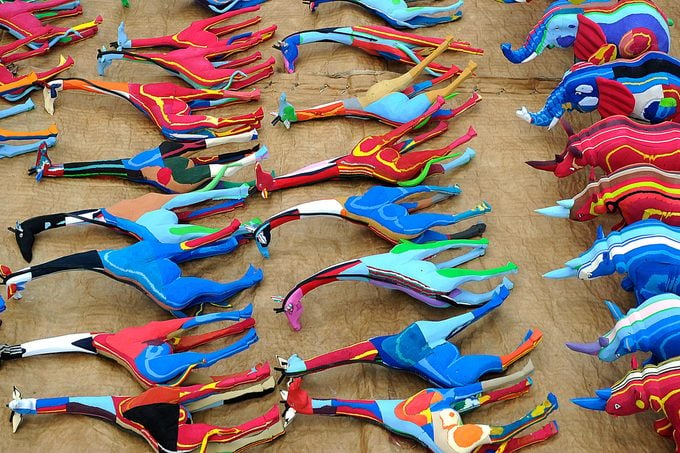
Ocean Sole is continuously growing and looking to keep waste off Kenya’s beaches and out of its water. This year alone, the organization has upcycled more than 750,000 sandals and collected more than 47,000 kilos (103,600-plus pounds) of waste.
When it comes to growing the Ocean Sole organization, Church has three “mantras,” as she calls them: trust to trade, trade to awareness, and awareness to protection. This first mantra is about building trust with the community to build a self-sustainable model that creates marketable products (“trade, not aid,” according to Church). In turn, the sales and popularity of those products drive awareness of the issue the group is working to solve—in this case, beach and water pollution and waste. Finally, awareness drives solutions, which, in this case, could mean funding and policy changes to support ocean welfare.
Eventually, Church would like to put together toolkits and other resources to bring this concept to other places around the world that have similar problems with waste and unemployment. Ocean Sole is also encouraging companies to use more eco-friendly materials when making flip-flops. “I think it’s time for us to start looking for an alternative shoe, or an alternative material, to fit that kind of fashion need,” Smith has said. “Our products need to evolve.”
Next, learn more about how fast fashion is harming the environment, and find out which eco-friendly companies you should be shopping at instead.
Sources:
- CNN: “Millions of discarded flip flops posing huge hazard to ocean life”
- Ocean Sole: “Our Story”
- Blue Solutions Interview Series: “Julie Church from Ocean Sole in Kenya on her solution”
- Ocean Sole: “Ocean Sole founder, Julie Church, speaks at the International Coastal Cleanup in September 2013”

